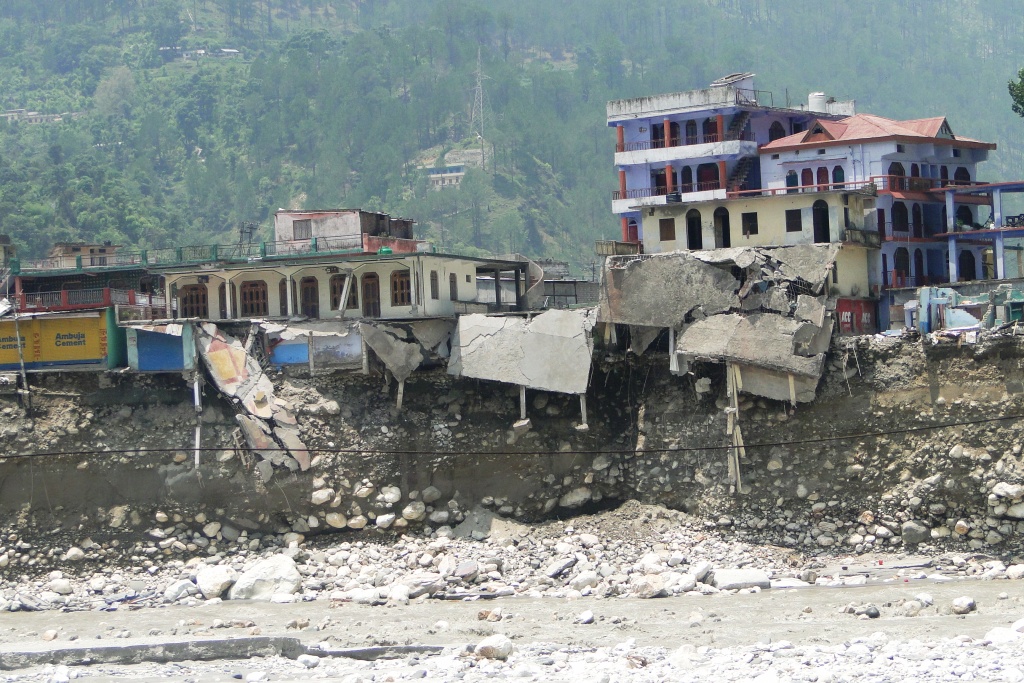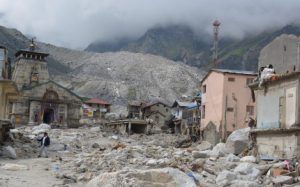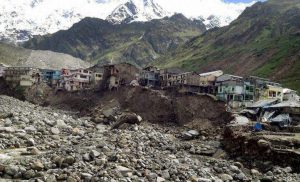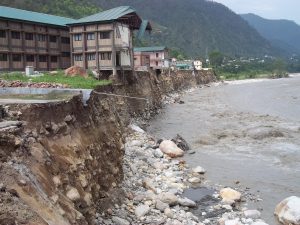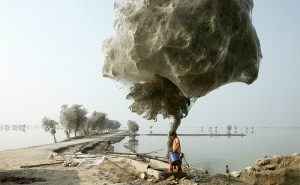Experts argue rampant development and poor disaster planning has exacerbated flood damage, as a massive rescue operation is under way to reach survivors
Over 60,000 people are stranded and about 1,500 missing after a cloudburst and floods swept away buildings and triggered landslides in the northern Indian state of Uttarakhand.
Thousands of soldiers and hundreds of paramilitary have been dispatched to rescue survivors. But road networks and river banks have collapsed, leaving many stranded without food or shelter. A large number of pilgrims are reported to be trapped around the holy town of Kedarnath.
Chief minister Vijay Bahuguna has described the floods as a “Himalayan tsunami” . Bahuguna told the BBC the death and destruction in the floods was “unprecedented”, and that causalities could run into the thousands. Flood-related deaths have also been reported in Himachal Pradesh and Uttar Pradesh states and neighbouring Nepal.
Rajendra K Pachauri, director of The Energy and Resources Institute (TERI), warned that this type of flood event is likely to increase in frequency and intensity over the next years in a television interview yesterday.
Experts and environmental activists argue indiscriminate development in hill towns and along rivers has blocked the natural flow of water and exacerbated flood damage. The place the blame on successive governments who have prioritised large scale infrastructure construction and neglected disaster prevention.
Sunita Narain of the Centre for Science and Environment said the Uttarakhand tragedy is a “man-made disaster,” according to The Hindu. She called for the states along the Himalayan ranges to reconsider their development models. While there could not be a blanket ban on development activities in these fragile areas given the needs of local people, “we need to look at ways of development without destroying natural resources,” she said.
NDTV has broadcast an interesting debate on impact of rampant development and poor planning in Uttarakhand and India’s other Himalayan states.
If you have trouble viewing this video, please refresh the page.
In August last year Uttarakhand state also experienced massive flash floods and landslides. There was widespread criticism of the lack of disaster preparedness by the state government.
More details and photos of the flood can be found on our partner site Climate Himalaya.
